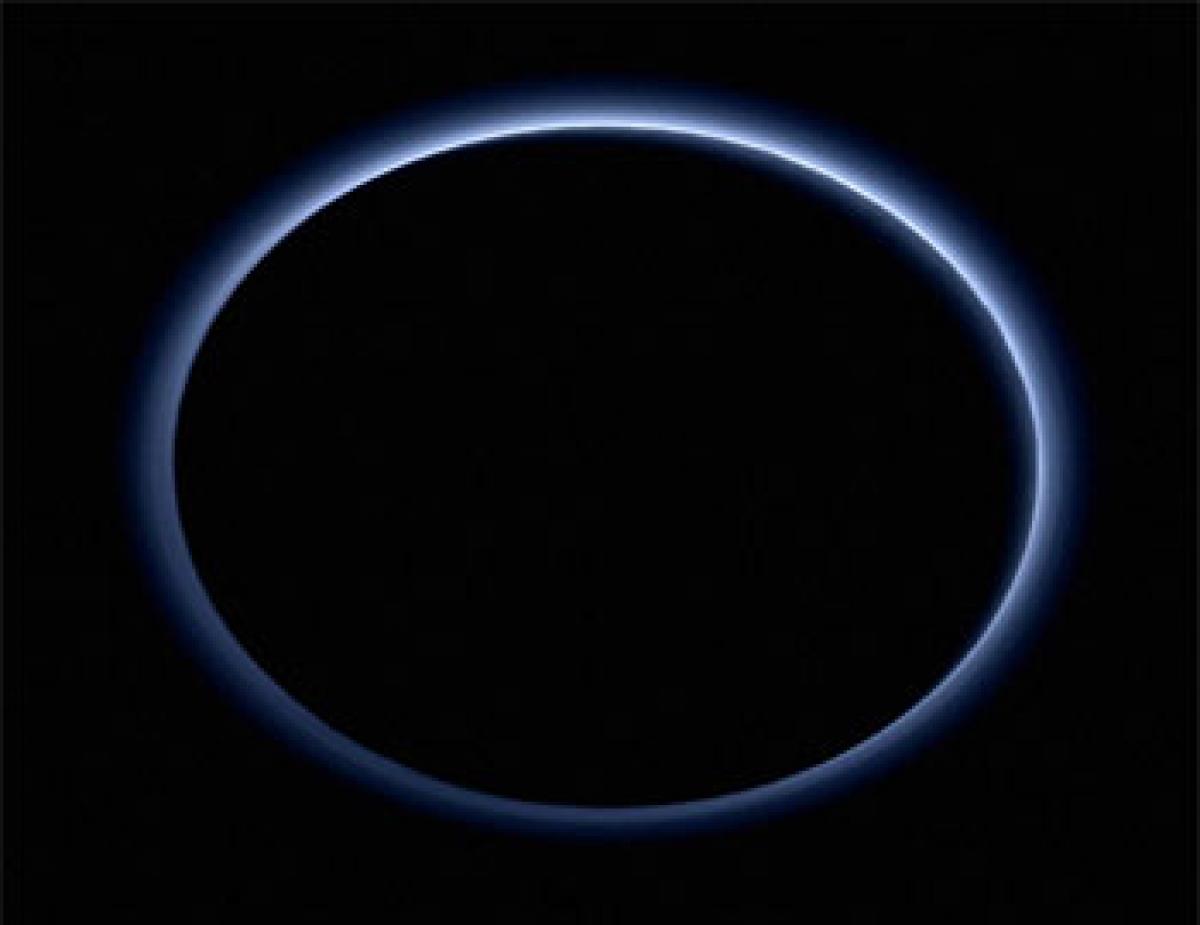Live
- Must-Watch OTT Originals in 2024: The Year’s Best Shows and Movies
- 40 Indian startups secure over $787 mn in a week
- India now formidable force on chess board
- Raghavendra Mutt pontiff visits Tirumala
- Whistleblower of OpenAI found dead in US apartment
- Trump’s US-first policy & India’s strategic latitude
- Chandrababu pays tribute to Potti Sriramulu and Sardar Vallabhbhai Patel
- India may miss TB elimination target
- Revolutionizing Women’s Health: The Era of AI
- Govt bill explains plan for ONOE
Just In

In a major finding, the first colour images of Pluto\'s atmospheric hazes beamed by NASA’s New Horizons spacecraft show that the icy-dwarf planet has blue skies similar to Earth and frozen water on its surface.
.jpg) Washington: In a major finding, the first colour images of Pluto's atmospheric hazes beamed by NASA’s New Horizons spacecraft show that the icy-dwarf planet has blue skies similar to Earth and frozen water on its surface.
Washington: In a major finding, the first colour images of Pluto's atmospheric hazes beamed by NASA’s New Horizons spacecraft show that the icy-dwarf planet has blue skies similar to Earth and frozen water on its surface.
"Who would have expected a blue sky in the Kuiper Belt? It's gorgeous," said Alan Stern, New Horizons principal investigator from Southwest Research Institute (SwRI), Boulder, Colorado.
The haze particles themselves are likely grey or red, but the way they scatter blue light has gotten the attention of the New Horizons science team.
"That striking blue tint tells us about the size and composition of the haze particles," said science team researcher Carly Howett, also of SwRI.
"A blue sky often results from scattering of sunlight by very small particles. On Earth, those particles are very tiny nitrogen molecules.
On Pluto they appear to be larger — but still relatively small — soot-like particles we call tholins," said Howett. Scientists believe the tholin particles form high in the atmosphere,
where ultraviolet sunlight breaks apart and ionises nitrogen and methane molecules and allows them to react with each other to form more and more complex negatively and positively charged ions.
When they recombine, they form very complex macromolecules, a process first found to occur in the upper atmosphere of Saturn's moon Titan.
The more complex molecules continue to combine and grow until they become small particles; volatile gases condense and coat their surfaces with ice frost before they have time to fall through the atmosphere to the surface,
where they add to Pluto's red colouring. In a second major finding, New Horizons has detected numerous small, exposed regions of water ice on Pluto, researchers said.
The discovery was made from data collected by the Ralph spectral composition mapper on New Horizons. "Large expanses of Pluto don't show exposed water ice because it's apparently masked by other,
more volatile ices across most of the planet. Understanding why water appears exactly where it does, and not in other places, is a challenge that we are digging into," said science team member Jason Cook, of SwRI.
A curious aspect of the detection is that the areas showing the most obvious water ice spectral signatures correspond to areas that are bright red in recently released colour images.
"I'm surprised that this water ice is so red," said Silvia Protopapa, a science team member from the University of Maryland, College Park.
"We don't yet understand the relationship between water ice and the reddish tholin colourants on Pluto's surface," said Protopapa.
The New Horizons spacecraft is currently 5 billion kilometres from Earth, with all systems healthy and operating normally.

© 2024 Hyderabad Media House Limited/The Hans India. All rights reserved. Powered by hocalwire.com







